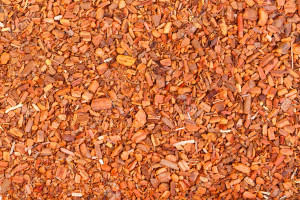Rubia tinctorum, the common madder or dyer’s madder, is a herbaceous perennialplant species belonging to the bedstraw and coffee family Rubiaceae.
Contents
Uses
Despite serious safety concerns, people take madder by mouth for preventing and dissolving kidney stones, as well as and for treating general menstrual disorders, and urinary tract disorders, blood disorders, bruises, jaundice, paralysis, spleen disorders, and sciatica. It is also used to promote urination, as an aphrodiasiac, and as a tonic.
Madder is also applied to the skin for certain skin conditions and to promote wound healing.
Benefits
The main substances found in the root are anthraquinone glycosides (ruberythric acid which decomposes to alizarin, lucidin, pseudopurpurin, xanthopurpurin, purpurin and rubiadin). Also present in the root are iridoid (asperulosid), organic acids, tannins, calcium, pectin and sugars. The medicinal properties of the plant are mainly due to the glycosides.
Madder has be mentioned more than few times in ancient medical literature. Hippocrates (ca. 460-377 BC) used the herb as an expectorant remedy and against various gynecological diseases. Additionally, it was listed as an astringent and diuretic agent as a remedy for anemia, a application that certainly stems from the plant’s dye red color
Madder is probably best know for its application in powder or extract form to treat kidney and bladder disorders and some clinical studies have been made with positive results on the herbs ability to dissolving kidney and bladder stones.
In addition to be apparently effective in dissolving kidney and bladder stones, the herb seems to have antispasmodic effect on ureters which makes the remnants of the stones pass with more ease.
Caution
Madder is considered LIKELY UNSAFE when taken by mouth. The chemicals in madder may cause cancer. Madder can also cause urine, saliva, perspiration, tears, and breast milk to turn red in color.
Special Precautions & Warnings:
Pregnancy and breast-feeding: It’s UNSAFE to take madder by mouth if you are pregnant. It might start your menstrual period and that could cause a miscarriage. Madder might also cause birth defects.
It’s also UNSAFE to use madder if you are breast-feeding. It might harm the nursing baby, and it might turn breast milk red.
Interactions
None are recorded.
Other names
Bengal Madder, Dyer’s Madder, Farberrote, Garança, Garance, Garance des Teinturiers, Indian Madder, Madder, Robbia, Rouge des Teinturiers, Rubia, Rubia de Tintas, Rubiae Tinctorum Radix
Reference
Source: WebMD, http://www.webmd.com/vitamins-supplements/ingredientmono-557-madder.aspx?activeingredientid=557&activeingredientname=madder
HerbalSupplement, http://www.herbal-supplement-resource.com/madder-uses-benefits.html

